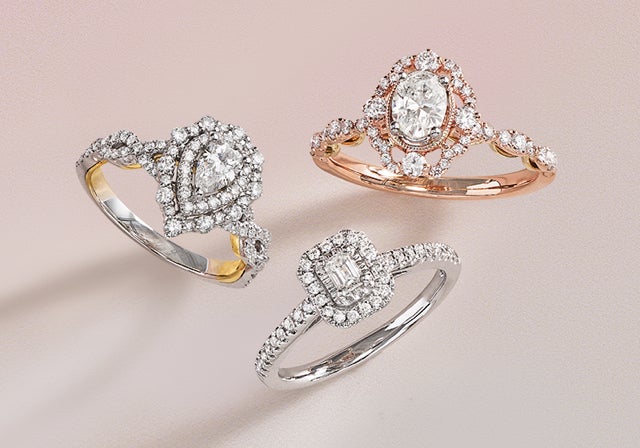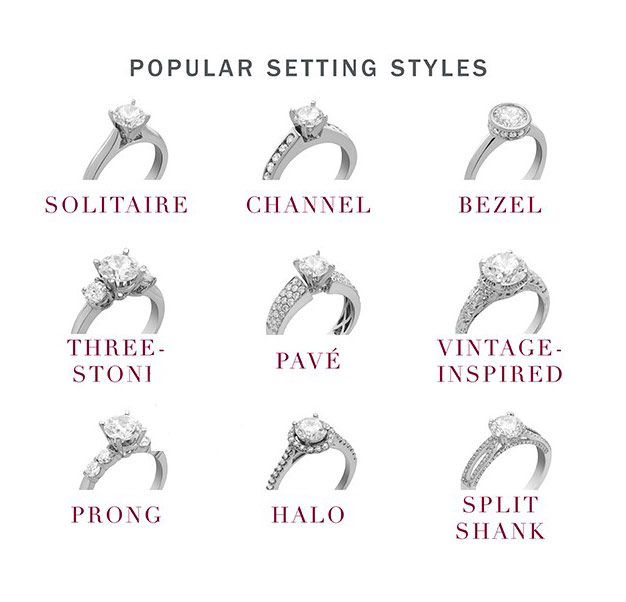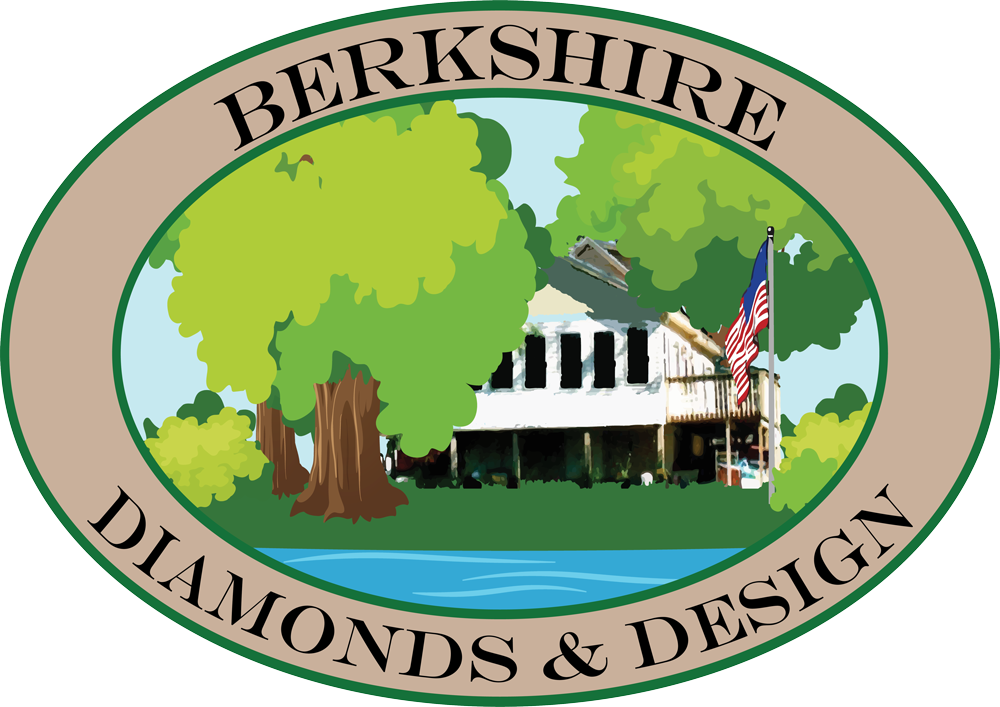
Ring Guide: Finding the Perfect Setting
When it comes to engagement rings, many people tend to only focus on the center stone while disregarding the setting. However, a ring setting or style can make or break your engagement ring in terms of what is practical, the overall look, and of course light return in that center stone.

The prong setting is the position of the center diamond to catch the most light and it is dazzling. In a prong-setting, the diamond is inserted into metal prongs that form a basket-like base. Then the ends of the prongs are bent over and shaped so that they rest against the crown, just past the stone’s girdle holding the stone snugly in place. The four-prong setting shows more of the diamond while the six-prong setting offers a bit more security in anchoring the diamond. Some advantages with the prong settings are the prongs are tiny, so more of the diamond will show unlike with other shape stones the prongs are visible. However, prong settings sit higher up so they do have a tendency to snag on clothing or other items they touch.
The bezel setting is a modern look, securing the diamond deep inside or extends slightly above the mounting. The surrounding metal is pushed over the edges of the stone to secure it in place and can be used on any stone shape. This type of setting is perfect for the active lifestyles, the diamond or gemstones are protected due to the low profile of the diamond which prevents it from getting banged or snagged since it does not have any prongs exposed as a mounting with prongs that are above the band will have. A bezel setting can also be used to cover chips in a gem.
Channel setting is a method whereby stones are suspended between two bars or strips of metal, and flow side by side in a row called channels. The diamonds stream in a continuous row and no metals are used as a separation between them. The proper way to set a channel is to cut a notch for each stone and a groove is cut along each channel. Can be many variations of channel work at times the walls will be raised—sometimes a center stone will be set between two bars that rise high from the base ring—or the channel might just be cut directly into some surface, making the stones flush with the metal. It is still channel setting, though. A channel setting is a popular choice when looking for engagement rings, eternity rings, and wedding bands.
Pave a type of setting where a number of small stones are set together. It literally means paved with diamonds. Small stones that encrust the surface of the band give the appearance of a solid diamond band instead of a metal one. This setting uses only tiny beads or prongs to hold the stone in place, which minimizes the appearance of the metal and makes the stone look much larger. A pave setting complements round or princess shaped stones the most and because the setting adds the necessary brilliance to the stone. The MIcro-Pave is also used for the terminology.
Halo setting Vintage, Romantic, with an Antique feel. The purpose of the halo-cut is to emphasize the central diamond. The framing of the center diamond shows off the brilliance and gives the illusion of a much larger center diamond. Even the smallest diamond will look twice the size. Halo is not just for round brilliant diamonds some of the most stunning framings of stone comes with heart shape, princess cuts, etc… the beauty of the Halo is that it is very universal. The halo setting is not just for rings, pendants and earrings give the same brilliance as a ring.
Milgrain setting beaded accents add delicate detail for a more ornate antique look. Milgrain is tiny balls that can be fabricated and individually soldered onto a piece. Knurling—or mill graining—the tool can be rolled over a metal surface creating a row of bumps and depressions, after which they are rounded, smoothed, and polished. This is popular in the Halo and Vintage type settings.
Eternity rings are used as a wedding ring or anniversary ring, eternity rings are a symbol of everlasting love. The ring or pendant has diamonds or gemstones that go all the way around the mounting in an Although eternity rings are frequently given to celebrate an anniversary or other special events such as the birth of a child, there is no precise occasion for which to give this exceptional gift. Eternity rings or pendants in this day and age are given as engagements, anniversaries, any special occasion. These are often can not be sized they are very specific.
Vintage or antique styles is an old term used for antique jewelry. So in this day age jewelry that is considered vintage is most likely to have pave, halo, milgrain, filigree, or beaded; intricate side diamonds detailing makes each piece unique. Some jewelers also use the term “vintage engagement ring” while most use it as a catch-all term meaning “an old ring”, others use it to mean a ring that was made to look like it was from another era; for example, a ring made in 1940 that has the filigree with a halo of beading and small diamonds. The rings are stunning and often full of diamonds and etching.
